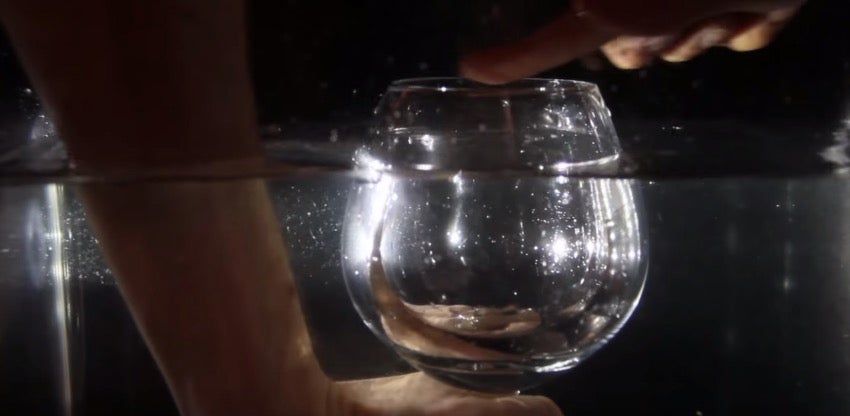Physicist discovers wine glass in water is an even better instrument than water in wine glass
The 'inverted glass harp' creates a theremin-esque sound

Your support helps us to tell the story
From reproductive rights to climate change to Big Tech, The Independent is on the ground when the story is developing. Whether it's investigating the financials of Elon Musk's pro-Trump PAC or producing our latest documentary, 'The A Word', which shines a light on the American women fighting for reproductive rights, we know how important it is to parse out the facts from the messaging.
At such a critical moment in US history, we need reporters on the ground. Your donation allows us to keep sending journalists to speak to both sides of the story.
The Independent is trusted by Americans across the entire political spectrum. And unlike many other quality news outlets, we choose not to lock Americans out of our reporting and analysis with paywalls. We believe quality journalism should be available to everyone, paid for by those who can afford it.
Your support makes all the difference.You’re probably familiar with the ‘glass harp’, a collection of wine glasses filled with different volumes of water so that they sound a different note when you wipe the rim.
It’s a popular party trick and some people take it quite seriously.
Robert Tiso, for instance, is sitting on 4.4 million views for this Bach fugue:
Physicists Daniel Quinn and Brian Rosenberg of Standford and Princeton respectively, have invented an ‘inverted glass harp’ however that sounds even cooler.
In research published in the journal Physical Review, they explain how glass harps are the same, mathematically, whether the water is on the inside or outside of the glass.
“That’s one of the things we were surprised about,” Quinn told New Scientist of the submersion method. “One is really just a mirror image of the other.”
The inverted glass harp is actually more useful than the standard kind, as submerging it further deepens the note, creating a theremin-type sound.
Here it is in action:
Our first attempt in the kitchen, with moderate success:
“You can control the depth yourself, so you only need one glass to perform a variety of pitches,” Quinn said, noting that it was easy to master and after just a few minutes they could play Mary Had a Little Lamb.
In the journal, the physicists use the inverted glass harp to write a universal rule for them, which you can read more about here.
Join our commenting forum
Join thought-provoking conversations, follow other Independent readers and see their replies
Comments